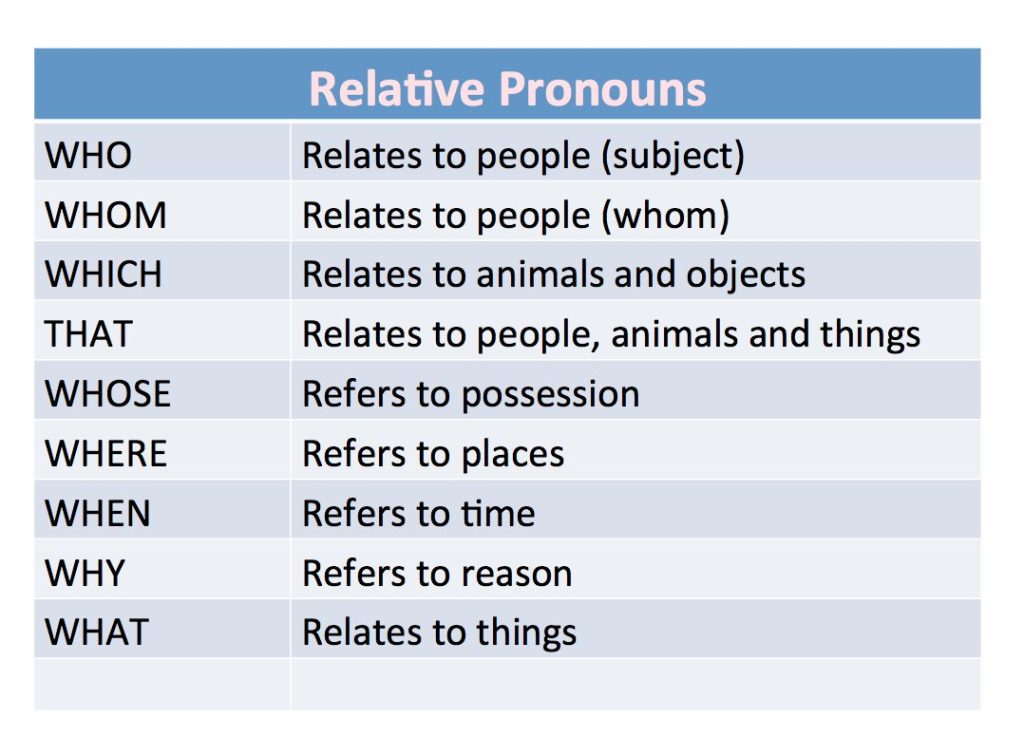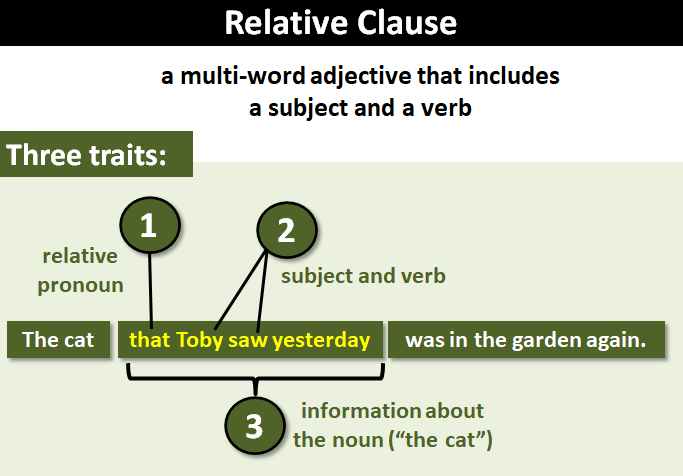Relative Clauses: A Comprehensive Guide to Understanding and Using Them Effectively In Your IELTS Test
Preparing for the IELTS often feels like preparing for a linguistic marathon. As you gear up to demonstrate your language proficiency to academic institutions and employers worldwide, it’s essential to understand the nuances that can make a substantial difference in your IELTS scores.
One such crucial aspect of English grammar that can significantly impact your performance is the effective use of relative clauses. In both the writing and speaking sections, mastering the art of using relative clauses can elevate the sophistication of your language and, in turn, enhance your IELTS scores. In this article, we delve into the world of relative clauses, exploring how they can be a game-changer in your IELTS journey.

1. What is relative clauses?
A relative clause, also known as an adjective clause, is a type of subordinate clause that provides additional information about a noun. It functions like an adjective by describing or giving more details about the noun it refers to. The relative clause typically starts with a relative pronoun (e.g., who, whom, whose, which, that) or a relative adverb (e.g., where, when, why).
e.g. The book that I am reading is interesting.
Relative clauses help to make sentences more detailed and provide context to the nouns they modify. They are an important part of English grammar and are commonly used in both written and spoken language.
2. Relative pronouns and relative clauses
Relative pronouns are words that introduce relative clauses. A relative clause, also known as an adjective clause, is a type of subordinate clause that provides additional information about a noun (the antecedent) in the main clause. Relative pronouns link the relative clause to the main clause and refer back to a noun previously mentioned in the main clause.
Common relative pronouns:
- Who: Refers to people.
- Whom: Also refers to people but is less commonly used in modern English. It is the object form of “who.”
- Whose: Indicates possession or ownership.
- Which: Refers to animals or things.
- That: Can refer to people, animals, or things. It’s often used in restrictive (defining) clauses but can also be used in non-restrictive (non-defining) clauses.
- Where: Refers to a place or location.
- When: Refers to a specific time or period.

3. How relative clauses are classified?
Relative clauses can be classified into two main types based on their essential properties and how they function within a sentence: restrictive (defining) relative clauses and non-restrictive (non-defining) relative clauses.
3.1. Restrictive (Defining) Relative Clauses
Restrictive relative clauses provide essential information about the noun they modify. The information is crucial to identify or define the noun more precisely. Without this clause, the meaning of the sentence would be significantly altered or unclear. These clauses are not set off by commas.
e.g. “The book that is on the table is mine.”
In this example, the relative clause “that is on the table” is essential to specify which book is being referred to. Without this information, the sentence would be ambiguous.
3.2.Non-Restrictive (Non-Defining) Relative Clauses
Non-restrictive relative clauses provide additional, non-essential information about the noun they modify. The information is not necessary for identifying the noun and can be removed without altering the main meaning of the sentence. These clauses are set off by commas.
e.g. “My friend John, who lives in London, is visiting.”
In this example, the relative clause “who lives in London” provides additional information about the friend, but it doesn’t limit or define which friend is being referred to. The main point of the sentence is that John is visiting.
Understanding the distinction between these two types of relative clauses is crucial because it impacts punctuation and the overall meaning of the sentence. Restrictive relative clauses are tightly integrated into the sentence structure and are necessary for clarity, while non-restrictive relative clauses provide extra information but don’t affect the core meaning of the sentence.
4. How to shorten the relative clauses?
Shortening a relative clause involves reducing its length or complexity while retaining the essential meaning. This is often done to make sentences more concise and easier to read. There are several ways to achieve this:
4.1. Omitting the Relative Pronoun
When the relative pronoun (e.g., who, which, that) is the object of the verb in the relative clause, it can be omitted.
e.g. “The person who is singing is my friend.”
Shortened: “The person singing is my friend.”
4.2. Using ‘Zero’ Relative Pronouns
In informal or spoken English, especially in restrictive clauses, the relative pronoun and sometimes the verb “to be” can be completely omitted.
e.g. “The book that I bought is interesting.”
Shortened: “The book I bought is interesting.”
4.3. Reducing Relative Clauses to Participial Phrases
Rewrite the relative clause using a participle (-ing or -ed form) to create a participial phrase. This is especially effective when the relative clause starts with a “to be” verb.
e.g. “The car that is parked outside is red.”
Shortened: “The car parked outside is red.”
4.4. Using Prepositional Phrases
Rewrite the relative clause as a prepositional phrase to shorten it.
e.g. “The person to whom I spoke is my boss.”
Shortened: “The person I spoke to is my boss.”
4.5. Using Infinitive Phrases
Rewrite the relative clause as an infinitive phrase to reduce complexity.
e.g. “The book that you need to read is on the table.”
Shortened: “The book you need to read is on the table.”
4.6. Combining Sentences
Sometimes, you can rephrase the sentence and combine it with another to eliminate the relative clause.
e.g. “The movie, which I watched last night, was fantastic.”
Shortened: “The movie I watched last night was fantastic.”

5. How do relative clauses affect your IELTS test?
Relative clauses are an essential grammatical feature that can significantly enhance your performance in the IELTS test, particularly in the writing and speaking sections. Demonstrating proficiency in using relative clauses can have a positive impact on your scores and overall communication skills. Here’s how relative clauses are related to the IELTS test:
5.1. Language Complexity and Range
Relative clauses allow you to exhibit a higher level of grammatical complexity and a broader range of vocabulary. Utilizing different types of relative clauses (defining and non-defining) with accuracy demonstrates your ability to vary your sentence structures, which is crucial for achieving a higher band score.
5.2. Descriptive Writing (Task 1 – Academic Writing)
In the Academic IELTS Writing Task 1, you may have to describe graphs, charts, processes, or maps. Effective use of relative clauses helps you provide additional details about the data or visuals, making your description more precise and insightful. It showcases your ability to convey complex information using appropriate grammatical structures.
5.3. Argument Development (Task 2 – Academic Writing / Task 2 – General Training Writing)
IELTS Writing Task 2 in both the Academic and General Training Writing requires you to present and justify an argument. Using relative clauses to support and elaborate on your ideas adds depth to your argument. You can provide examples, reasons, or explanations using relative clauses, emphasizing the relevance and coherence of your argument.
5.4. Formal Writing (Task 1 – General Training Writing)
In the General Training Writing Task 1, where you need to write a formal or semi-formal letter, using relative clauses appropriately can enhance the formality and sophistication of your language. It’s essential to employ relative clauses to provide detailed information or clarify points, especially when writing formal letters.
5.5. Speaking (Part 1, Part 2, and Part 3):
In the IELTS Speaking section, using relative clauses demonstrates your ability to structure your responses effectively. Whether you’re talking about people, places, experiences, or things, incorporating relative clauses appropriately allows you to offer additional information and context, showcasing a higher level of language proficiency.
>>See also: Grammar for IELTS
Relative clauses are an invaluable asset when it comes to showcasing your language prowess in the IELTS test. Their correct and strategic use can elevate the complexity and coherence of your writing and speaking, demonstrating a high level of language proficiency to the examiners. As you prepare for the IELTS test, make sure to dedicate time to understanding and practicing the usage of relative clauses. Incorporating them effectively can make a difference in how your responses are perceived and scored, ultimately contributing to your success in this critical examination. Best of luck with your IELTS journey, and may your command over relative clauses propel you towards your desired scores! Start doing our IELTS online test now!